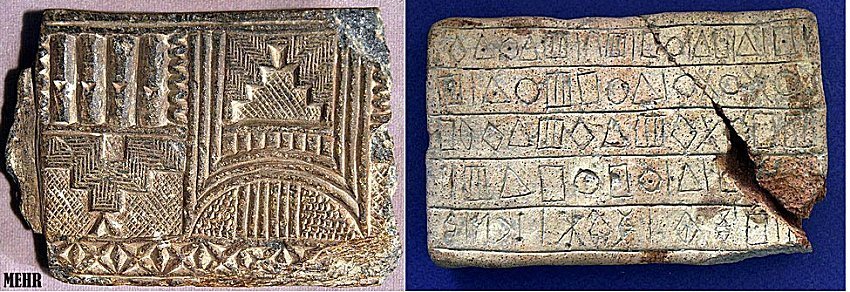A. Sutherland - AncientPages.com - For centuries, Mesopotamia was thought to be the world's oldest civilization. The people accepted this until a 5,000-year-old temple was accidentally discovered at Jiroft Historical Site in Iran's southern Kerman province.
In 2000, floods along the Halil River stretching for some 390 km running in the Jiroft and Kahnuj districts of Kerman Province, Iran, revealed thousands of previously unknown tombs. Since 2002, excavations in Jiroft began to uncover the cultural and historical remains of the region.
This event prompted archaeologists to identify the region as the world's oldest cradle of human civilization. It has long been hypothesized that Jiroft is the legendary land of Aratta, a 'lost' Bronze Age kingdom of renown.
According to texts dating from around 2100 BC, Aratta was a beautifully decorated capital with a citadel fashioned with green lapis lazuli and its lofty towers of bright red brick.
Aratta's artistic production was famous and highly regarded.
About 2500 BC, the Sumerian king Enmerkar sent a message to the ruler of Aratta requesting that artisans and architects be dispatched to his capital, Uruk, to build a temple to honor Inanna, the goddess of fertility and war.
Enmerkar addressed his letter to Inanna:
'Oh sister mine, make Aratta, for Uruk's sake, skillfully work gold and silver for me! (Make them cut for me) translucent lapis lazuli in blocks, (Make them prepare for me) electrum and translucent lapis!' prayed the Sumerian ruler.
Many valuable objects, including two clay inscriptions carrying the oldest human scripts, have been unearthed during authorized excavations in the region.
Among many fascinating artifacts of great value, two impressive stone reliefs were unearthed in the Konar Sandal area in Jiroft. They are carved on soapstones and depict two men with human faces and snake bodies instead of legs.
"These reliefs were carved on soapstones. They are 25 by 17 centimeters in size with a thickness of about 1.5 centimeters," said Professor Yousof Majidzadeh, head of the excavation team in Jiroft.
'This is the first time that such stone reliefs of half-human and half-snake creatures have been discovered in this historical site.
Researchers suggest Jiroft culture as an early Bronze Age (late 3000 BC) situated in what is now Iran's Kermān and Sistan Provinces. It was widely accepted by many to have originated from the Jiroft (south-central Iran). The hypothesis is based on a large collection of artifacts that were confiscated in Iran.
Among remarkable artifacts are carvings of scorpion-like human beings on stones and eagle reliefs previously unearthed in this historical site. These stone reliefs were carved on a flat rock. There are 12 circles on the arms of each of them.
This flat piece of stone probably had an entertainment usage some 5000 years ago, something like today's backgammon. These circles are carved around the arms and the chests of the carved figures,' explained Majidzadeh, who believes that Jiroft is the legendary land of Aratta.
'When one imagines that Uruk was the heart of the Sumerian civilization and that its king is asking another ruler about 2000 kilometers (1200 mi) distant to send his artisans, one realizes that the quality of their work must have been extraordinary," Madjidzadeh explains.
'The craftsmen must have been known all over. Today there is no doubt in my mind that Jiroft was Aratta.'
Professor Majidzadeh's team uncovered more than two square kilometers of remains that date back to at least the late 3rd millennium BC.
Some theories propose that the remains belong to a forgotten culture known as the Jiroft civilization and shed light on other ancient cultures in Mesopotamia in the third and fourth millennia BC.
A large number of stone and clay objects from the third millennium BC were discovered during archeological excavations, but unfortunately, illegal excavations of the smugglers operating in the Jiroft site before 2001 resulted in the loss of some invaluable evidence.
Many historical treasures were sold to museums and private collections outside the country.
Written by – A. Sutherland - AncientPages.com Senior Staff Writer
Copyright © AncientPages.com All rights reserved. This material may not be published, broadcast, rewritten or redistributed in whole or part without the express written permission of AncientPages.com
Expand for references
References:
MUSCARELLA, OSCAR WHITE. "Jiroft and "Jiroft-Aratta" A Review Article of Yousef Madjidzadeh, "Jiroft: The Earliest Oriental Civilization"." Bulletin of the Asia Institute, New Series, 15 (2001): 173-98
Touraj Daryaee, The Oxford Handbook of Iranian History
Cais Archaeological And Cultural News.








